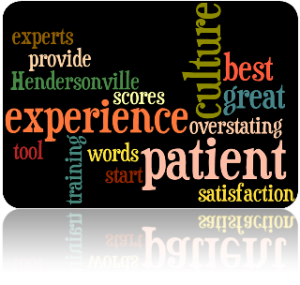 There is no shortage of patient satisfaction “experts” and CEOs in healthcare wanting you to implement the latest measurement tool, rounding format, physician best practice, script, or leading-edge technology – all with the promise of launching patient satisfaction scores to the stratosphere! Okay, maybe I’m overstating it, but it’s not overstating it to suggest that many of these experts offer a tactic or tool as the panacea.
There is no shortage of patient satisfaction “experts” and CEOs in healthcare wanting you to implement the latest measurement tool, rounding format, physician best practice, script, or leading-edge technology – all with the promise of launching patient satisfaction scores to the stratosphere! Okay, maybe I’m overstating it, but it’s not overstating it to suggest that many of these experts offer a tactic or tool as the panacea.
However, the article on Park Ridge Health in Hendersonville, N.C. suggests a different approach. They did implement a new training program, but after the description of the training, the Director of Patient Experience notes that “When we changed the culture, that’s when we saw the scores improve. We always want the patient to be involved in their care, and we try to provide them a voice to be able to talk to us in layman’s term about their experience and their needs.”
The key words? “Changed the culture.”
The consistency required for sustainable excellence comes from inside. It comes from culture. If a hospital wants to have a great patient experience, they need to look inside at the people, processes, policies, services, and facilities that comprise the experience.
The best scripting results in merely words if not delivered with interest, empathy, and sincerity. The best leader preaching on efficiency and marketing a “2 minute wait in Our E.D.!” are setting staff up for failure until the organization internally has communication and service delivery processes that are efficient and high quality. The great customer service techniques that we and others teach won’t be effective long-term if they are not reinforced on an ongoing basis and modeled by leaders.
To get a great patient experience, “provide them with a voice” as they did in Hendersonville. But also start with each other; start with culture.
Improve the Patient Experience from the Inside Out.
Did you like this post? Here are other Healthcare-related posts:






















